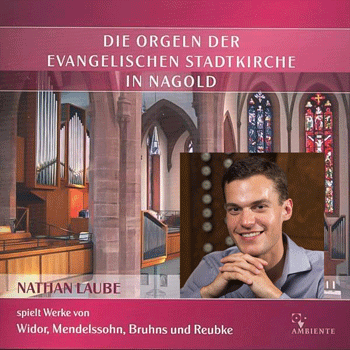
Raven announces new recordings. Die Orgeln der Evangelischen Stadtkirche in Nagold features a live concert performance by Nathan Laube recorded at the Johanneskirche in Nagold, Germany, released on the Ambiente label and imported by Raven for sale in America and elsewhere (ACD-1062, $16.98).
Laube plays his transcription for organ of the Mendelssohn’s Variations Serieuses; Reubke, Sonata on the 94th Psalm; Widor, “Allegro vivace” from Symphonie V; and Bruhns, Praeludium in E Minor.
A 32-page printed catalog of CD recordings and DVD videos, mostly produced by Raven but with a few items by Fugue State Films and others, has been published and is free upon request to [email protected] or 804/355-6386 or Raven, Box 25111, Richmond VA 23261.
For information: www.ravencd.com.

